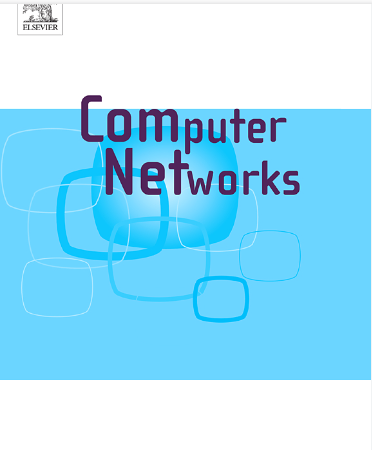Age of collection with non-orthogonal multiple access: A theoretical-plus-experimental study
IF 4.4
2区 计算机科学
Q1 COMPUTER SCIENCE, HARDWARE & ARCHITECTURE
引用次数: 0
Abstract
This paper examines the concept of information freshness in a collaborative surveillance scenario utilizing non-orthogonal multiple access (NOMA). In this scenario, each monitoring device observes a portion of a common target and reports the latest status to a common access point (AP), which then recovers the complete observations. We use the age of collection (AoC) as a metric for information freshness. Unlike the conventional age of information (AoI) metric, the instantaneous AoC decreases only when the AP receives all partial updates from different devices (i.e., successfully receives a “joint” update). Consequently, existing AoI-oriented analyses on NOMA cannot be easily generalized to AoC due to the different update rules between AoC and AoI. Conventional NOMA schemes typically employ multiuser decoding (MUD) techniques to decode update messages from different devices, referred to here as the MUD-only NOMA system. However, MUD techniques are less effective when the signal-to-noise ratios (SNRs) of different NOMA users are nearly balanced. Therefore, we consider network-coded multiple access (NCMA), an advanced NOMA scheme that integrates MUD with physical-layer network coding (PNC). PNC is a technique that transforms wireless mutual interference into useful network-coded information, working well even when the SNRs of different users are similar. Experimental results using software-defined radios indicate that NCMA is a practical solution for achieving low average AoC under varying channel conditions. The combination of MUD and PNC enables the AP to receive joint update messages much faster, significantly reducing the average AoC of the system.
求助全文
约1分钟内获得全文
求助全文
来源期刊

Computer Networks
工程技术-电信学
CiteScore
10.80
自引率
3.60%
发文量
434
审稿时长
8.6 months
期刊介绍:
Computer Networks is an international, archival journal providing a publication vehicle for complete coverage of all topics of interest to those involved in the computer communications networking area. The audience includes researchers, managers and operators of networks as well as designers and implementors. The Editorial Board will consider any material for publication that is of interest to those groups.
 求助内容:
求助内容: 应助结果提醒方式:
应助结果提醒方式:


